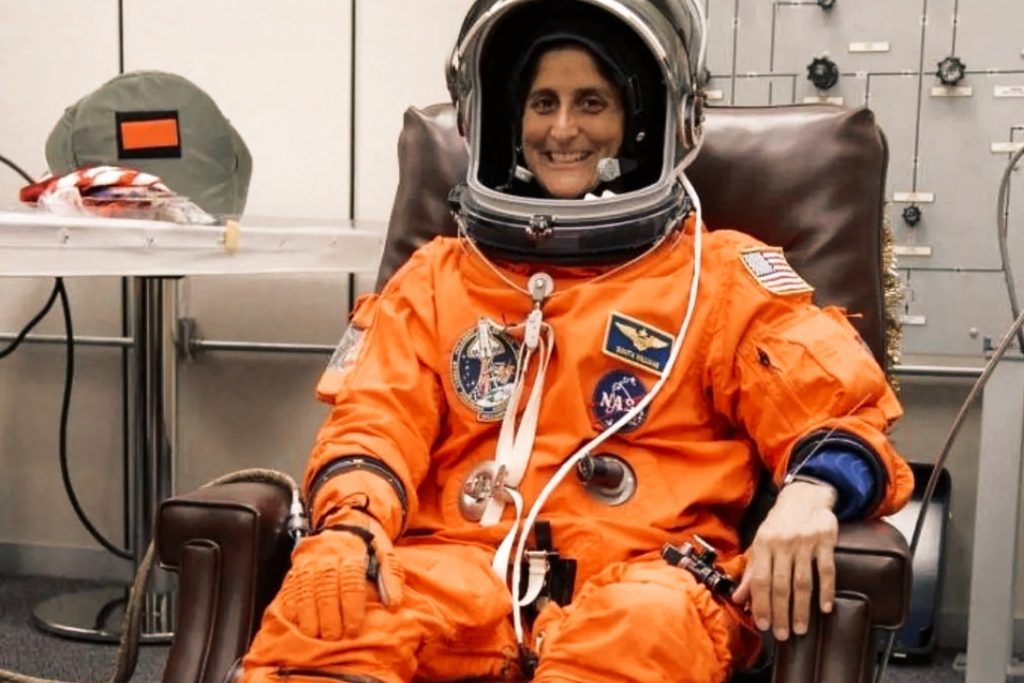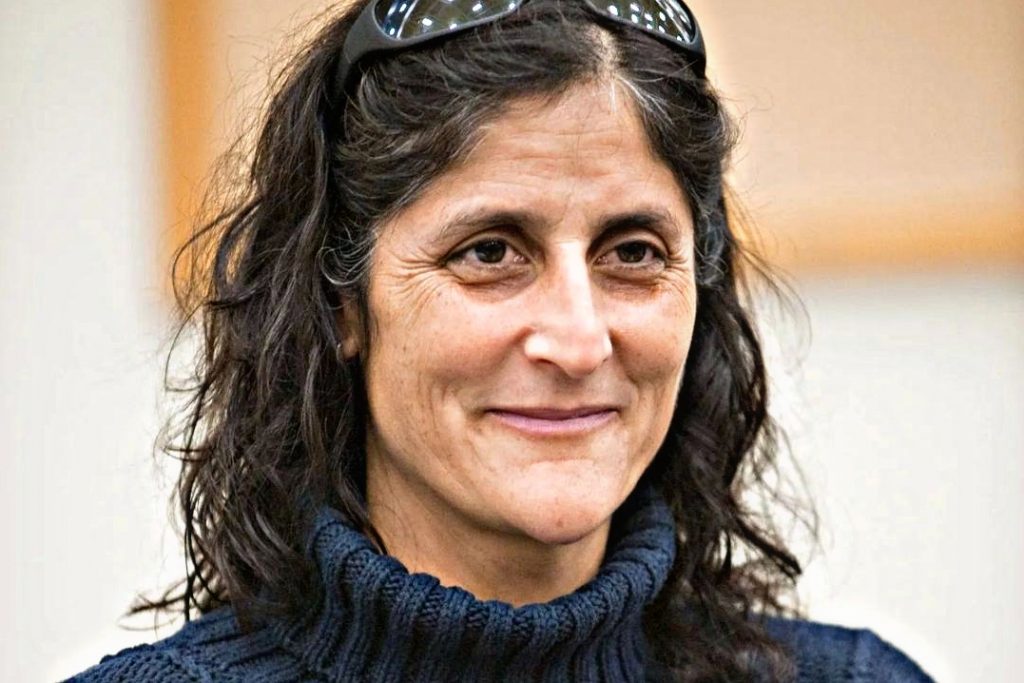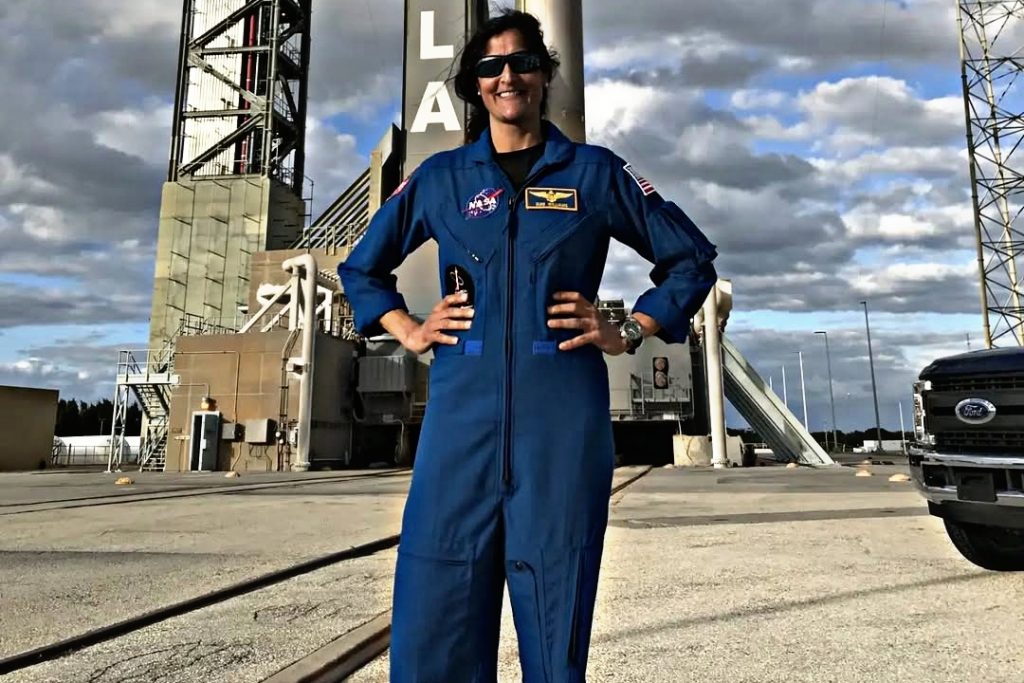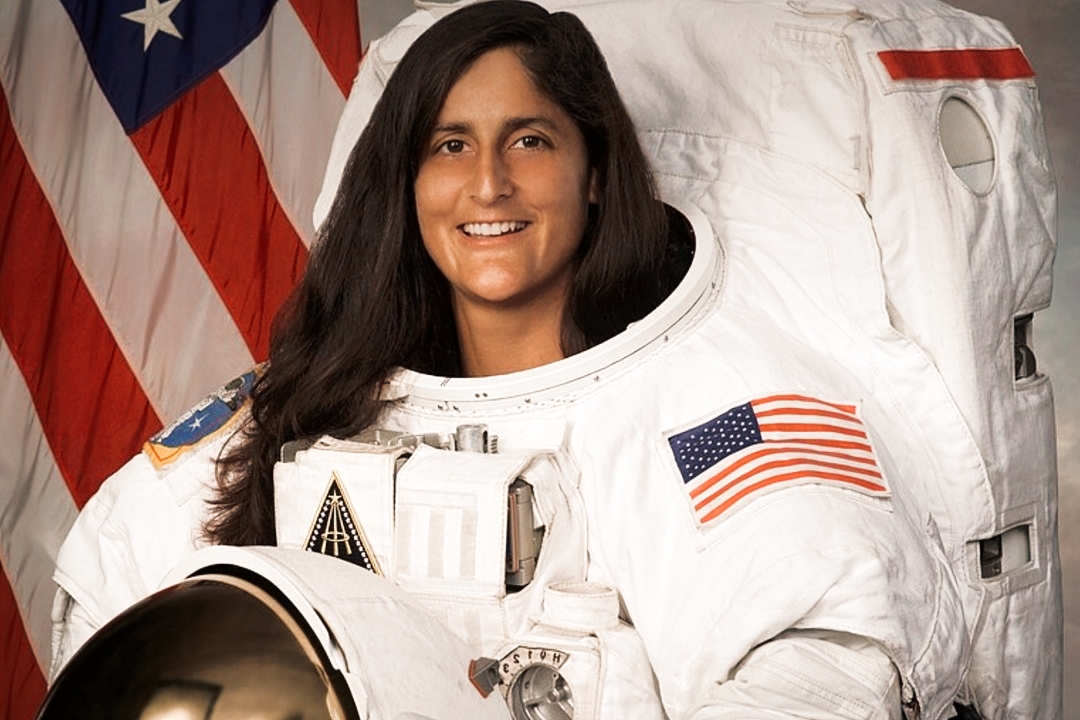Sunita Williams, an astronaut whose journey has taken her to the far reaches of space, is a name synonymous with achievement, innovation, and perseverance. A role model for countless individuals around the world, her story is one of overcoming challenges, breaking barriers, and consistently pushing the limits of human potential. From her childhood in a multicultural family to becoming one of NASA’s most distinguished astronauts, Sunita Williams’ biography offers an inspiring narrative of courage and resilience.
This article delves deeply into the life of Sunita Williams, chronicling her upbringing, education, career, significant space missions, her influence on the field of space exploration, and the indelible mark she continues to leave on humanity. Let’s explore the extraordinary life of this trailblazer.
Early Life and Background

Sunita Pandya Williams was born on September 19, 1965, in Euclid, Ohio, to Deepak Pandya and Bonnie Pandya. Her father, an Indian immigrant, was a renowned neuroanatomist, while her mother, of Slovenian descent, was an active and involved educator. Sunita’s childhood was marked by a mixture of cultural influences that helped shape her worldview. Growing up in Needham, Massachusetts, Sunita was exposed to the best of both American and Indian cultures.
As the youngest of three children, she was encouraged by her parents to explore her interests in both academics and sports. She excelled in school and was particularly drawn to science, with a keen interest in the physical world around her. From an early age, Sunita showed a fascination with flight and space, although at the time, the idea of becoming an astronaut seemed distant.
In high school, Sunita was known for her athleticism, excelling in swimming and running, two disciplines that would later serve her well in space. These sports cultivated the endurance, discipline, and mental toughness she would need to endure the physical demands of spaceflight. Her time at Needham High School reinforced her drive and ambition, setting her on a path toward a successful career in aviation and space exploration.
Education and Early Aspirations

After graduating from high school, Sunita Williams attended the prestigious United States Naval Academy in Annapolis, Maryland, in 1983. At the time, the academy was an all-male institution, and Sunita was one of just a few women enrolled. This experience was formative in shaping her resilient character and helping her develop the leadership skills necessary to thrive in a male-dominated environment.
At the Academy, Sunita was not just an academic standout; she also continued to compete in athletics, showing her multifaceted abilities. She graduated in 1987 with a Bachelor of Science degree in Physical Science.
During her years at the Academy, Sunita’s interest in aviation deepened. She was inspired by the Navy’s role in cutting-edge technology and was determined to become a pilot. She soon learned that this wasn’t just a dream—it was a challenge that would test her physically and mentally.
Upon graduating, she was commissioned as an officer in the United States Navy. Her first assignment was with the Navy’s Coastal Systems Command, where she worked on developing weapon systems. Despite this early technical focus, Sunita was intent on becoming a naval aviator, a goal that was well within her grasp thanks to her persistence and determination.
A Distinguished Navy Career

Sunita Williams quickly rose through the ranks of the U.S. Navy, making a name for herself as a highly skilled officer and aviator. After completing flight school in 1989, she earned her naval aviator wings and became one of the Navy’s few female pilots. She was stationed at various locations, including the Naval Air Station in Pensacola, Florida, where she completed the demanding Naval Aviation Training Command.
Sunita’s skills in aviation were honed further when she was selected to fly the UH-60 Sea Hawk helicopter, a role that saw her participate in several critical missions, including search and rescue operations. She was also part of the USS Saipan, which offered her firsthand experience in conducting rescue operations during military deployments.
Her proficiency as a helicopter pilot, combined with her leadership capabilities, quickly made Sunita a standout in the Navy. In 1993, Sunita was accepted into the prestigious U.S. Naval Test Pilot School in Patuxent River, Maryland, where she honed her abilities as a test pilot. She accumulated over 3,000 hours of flight time, flying more than 30 different aircraft. This experience proved invaluable in her subsequent career with NASA.
NASA Selection and Astronaut Training
In 1998, Sunita Williams’ lifelong dream of spaceflight began to take shape when she was selected as one of NASA’s astronaut candidates. NASA’s rigorous selection process was based not only on technical knowledge and physical fitness but also on the ability to handle high-pressure situations—traits that Sunita had already demonstrated throughout her military career.
During her two years of training at the Johnson Space Center in Houston, Texas, Sunita was exposed to the full spectrum of astronaut duties. She trained in spacecraft systems, robotics, and extravehicular activities (EVAs), the latter of which would become one of her most notable contributions to space exploration. Moreover, she studied Russian to be able to collaborate effectively with cosmonauts aboard the International Space Station (ISS), and she even became certified to perform spacewalks.
Her training was grueling, involving both physical and mental conditioning. But Sunita Williams’ indomitable spirit and exceptional skills ensured she passed with flying colors. Once she completed her training, she was officially assigned to space missions, setting the stage for a groundbreaking career in space exploration.
Historic Space Missions
STS-116: A Journey to the ISS
Sunita Williams made her first spaceflight on December 9, 2006, aboard Space Shuttle Discovery on the STS-116 mission. This mission was a critical one in NASA’s ongoing efforts to build and maintain the International Space Station. During her stay aboard the ISS, Sunita became part of Expedition 14 and later Expedition 15, marking the beginning of a distinguished chapter in her career.
During her time on the ISS, Sunita conducted a variety of scientific experiments and performed maintenance on the station’s systems. She also became the first woman to perform multiple spacewalks on a single mission. In total, Sunita completed four spacewalks, totaling over 29 hours in space. At the time, her spacewalk time set a record for the most time spent on spacewalks by a female astronaut.
But beyond the technical and scientific accomplishments, Sunita Williams’ mission was significant for another reason: it demonstrated her leadership, resilience, and ability to thrive in the challenging environment of space. She became a symbol of strength and excellence, inspiring people around the world, particularly young women and minorities, to pursue careers in science, technology, engineering, and mathematics (STEM).
Expedition 32/33: Commanding the ISS
Sunita Williams’ second spaceflight began on July 15, 2012, when she was launched to the ISS aboard the Russian Soyuz TMA-05M spacecraft. This mission was especially significant because she became the second woman in history to command the International Space Station.
During Expedition 32/33, Sunita spent more than four months aboard the ISS, where she continued her scientific research and oversaw crucial maintenance operations. She conducted three additional spacewalks, bringing her total EVA time to 50 hours and 40 minutes. This made her the world record holder for the most time spent performing spacewalks by a female astronaut at the time.
As commander of the ISS, Sunita Williams was responsible for ensuring the safe and efficient operation of the station, overseeing crew members, and managing various scientific experiments. Her leadership in this capacity was widely praised, and she continued to exemplify the qualities that had made her a standout astronaut: dedication, teamwork, and a passion for discovery.
Scientific Contributions and Research
Throughout her missions, Sunita Williams was actively involved in a wide range of scientific research aimed at understanding how microgravity affects the human body, materials, and biological systems. Her work was critical in preparing for long-duration space missions, such as those to Mars.
For instance, Sunita participated in studies on the effects of spaceflight on the cardiovascular system and muscle atrophy. Her contributions to the understanding of these phenomena have been crucial in developing countermeasures to maintain astronaut health during extended spaceflights.
Additionally, Sunita’s time aboard the ISS allowed her to take part in experiments related to fluid mechanics, combustion, and the study of materials in space. This research has provided valuable insights into processes that could benefit technology here on Earth, from improved medical devices to advanced materials used in engineering and manufacturing.
Challenges and Personal Triumphs
Sunita Williams faced numerous challenges during her space missions. One of the most demanding was the physical toll that extended stays in space took on her body. Microgravity affects muscle mass, bone density, and the cardiovascular system, and it takes time for astronauts to readjust to Earth’s gravity after returning from space. Yet, Sunita’s training and resilience enabled her to handle these challenges effectively.
Moreover, Sunita had to deal with the psychological challenges of spending months in a confined space, far from her loved ones and familiar surroundings. Astronauts are isolated in the ISS for extended periods, and maintaining mental well-being is crucial for mission success. Throughout her missions, Sunita’s positive attitude, sense of humor, and strong communication with her team kept spirits high.
One of her most remarkable personal achievements came when she participated in the spacewalks despite facing numerous technical hurdles. Her determination to complete these missions, regardless of the difficulties she faced, proved her grit and resolve.
Life After Space
Since completing her space missions, Sunita Williams has continued to serve NASA in various capacities. She has been involved in astronaut training, research, and development projects, contributing to the planning of future space missions, particularly with the Artemis program, which aims to return humans to the Moon and eventually explore Mars.
Sunita also became a vocal advocate for the advancement of commercial spaceflight and the development of new technologies that could enable greater human exploration of space. She has encouraged the private sector to collaborate with space agencies like NASA to unlock the full potential of space exploration.
Moreover, Sunita Williams remains a passionate educator and role model. She frequently speaks to students and young scientists, inspiring them to pursue careers in STEM fields. Through her work as an ambassador for science and technology, she has become an icon for young people, especially women and girls, who see in her the possibility of achieving their dreams regardless of the obstacles they may face.
Legacy and Recognition
Sunita Williams’ impact on space exploration has been profound. Her contributions to science, spacewalks, and international collaboration have earned her numerous accolades, including the Padma Bhushan, one of India’s highest civilian honors. Additionally, she has received several NASA awards, including the NASA Space Flight Medal and the NASA Distinguished Service Medal.
Her legacy goes beyond her numerous records and accolades, as Sunita Williams remains a symbol of perseverance and global cooperation. Her pioneering work continues to inspire future generations of explorers, engineers, and scientists, proving that with determination, one can achieve the seemingly impossible.
Conclusion
Sunita Williams’ extraordinary journey from her early life in Ohio to her historic space missions demonstrates the incredible potential of the human spirit. Through her record-breaking accomplishments, her work in scientific research, and her ongoing advocacy for space exploration, Sunita Williams has cemented her place in history as one of the most influential astronauts of our time.
Her story serves as a powerful reminder that no dream is too big, no challenge is insurmountable, and the possibilities for discovery are infinite. Sunita Williams’ journey is far from over, and as she continues to inspire new generations to look to the stars, her legacy will live on for years to come.
This expanded version of Sunita Williams’ biography provides a comprehensive look at her life, career, and accomplishments, offering insights into the dedication and perseverance that led her to become one of the most respected figures in space exploration.

